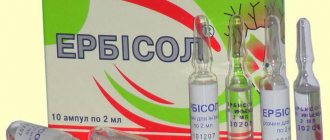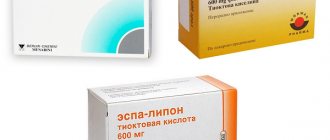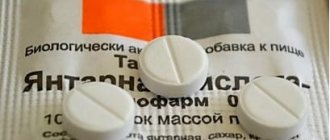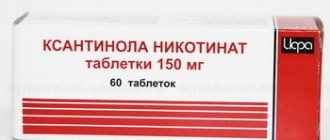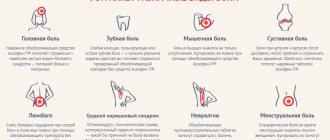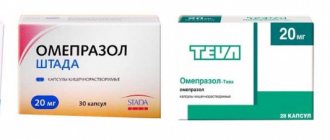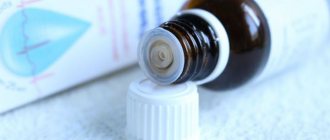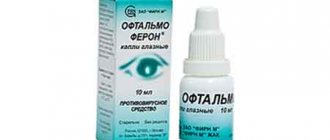Nicotinic acid first appeared in 1867. At the beginning of the twentieth century, after comparing the pharmacological properties, it was compared with vitamin PP. Since 1938, on the territory of the Soviet Union, it began to be used in the treatment of pellagra, a disease caused by PP deficiency. In Latin it is called acidum nicotinicum. Refers to group B vitamins number three. Nicotinic acid tablets are used in medicine and cosmetology.
Another name is niacin, in Latin niacinum, in the annotations the name nicotinamide is found. All these are names of one substance that a person needs to carry out redox processes.
Pharmacodynamics and pharmacokinetics
Vitamin PP (nicotinic acid) is a vitamin that takes part in a large number of oxidative reactions occurring in living cells.
The drug has a specific anti-pellagric effect and is used to improve the activity of blood vessels .
The administration of nicotinic acid preparations makes it possible to normalize the permeability of vascular walls and, accordingly, reduce tissue swelling, improve the state of tissue (in particular, nitrogen and carbohydrate) metabolism and microcirculation, expand the lumen of blood vessels (a vasodilating effect is noted at the level of small blood vessels, including the vessels of the brain brain), increase the fibrinolytic activity of blood plasma and reduce platelet aggregation by suppressing the synthesis of TxAj (thromboxane A2), a mediator of their aggregation and degranulation.
In the body, vitamin PP is biotransformed into nicotinamide , which binds to the hydrogen-transferring coenzymes NAD and NADP. Regulates oxidation-reduction reactions, takes part in synthetic processes, metabolism of amino acids , fats , purines , proteins , as well as in glycogenesis and tissue respiration .
Reduces the rate of VLDL synthesis and inhibits lipolysis (fat degradation) in adipose tissue. Helps normalize blood lipid composition: reduces the concentration of LDL, triglycerides and total cholesterol , while increasing the content of HDL in the blood. Shows antiatherogenic and detoxification properties .
Ensures the conversion of the trans-form of retinol into cis-retinal, which is used in the synthesis of the visual pigment rhodopsin, stimulates the release of histamine and promotes the activation of kininogenesis.
Vitamin B3 is well absorbed in the pylorus of the stomach and the upper parts of the duodenum . With the participation of pyridoxine and riboflavin, it can be produced by the bacterial flora of the intestine from tryptophan , which comes with food. tryptophan required to form a milligram of the substance is 60 mg.
Metabolization occurs in the liver. Nicotinic acid and its metabolic products are excreted by the kidneys; when taken in high doses, the substance is excreted primarily in pure form.
Content of vitamin B3/PP in food products
Most people don't even know what foods contain niacin. Advantage in the amount of vitamin PP in products of animal origin:
- lean pork;
- liver;
- chicken breast;
- low-fat fish;
- kidneys;
- chicken eggs;
- dairy products.
It is also possible to obtain the vitamin from plant foods:
- tomatoes;
- potato;
- carrot;
- peanut;
- yeast, etc.
Medicinal plants are rich in vitamin PP, most of all:
- alfalfa;
- sage;
- sorrel;
- rose hip;
- burdock root;
- eyebright;
- dandelion, etc.
Niacin is present in all food groups, but its level of absorption varies. What is the difference? Vitamins from legumes are easily absorbed by the body, but vitamins from grains are difficult to absorb. The synthesis of nicotinic acid occurs exclusively in the presence of the amino acid tryptophan, which is replenished in the body when consuming proteins of animal origin.
Research has proven that the quantitative determination of vitamin PP in food products is determined by chemical, spectrophotometric and microbiological methods.
Indications for use
Indications for the use of Nicotinic acid are:
- hypo- and avitaminosis caused by insufficient intake of vitamin B3 from food, exclusively parenteral nutrition, malabsorption syndrome (including against the background of pancreatic ), Hartnup disease, rapid weight loss, gastrectomy , diseases of the digestive system ( persistent diarrhea , including tropical , celiac enteropathy , Crohn's disease );
- conditions accompanied by an increased need for vitamin PP (diseases of the hepatobiliary system, prolonged fever, hyperthyroidism , prolonged stress, chronic infections, pregnancy, lactation, cancer);
- hyperlipidemia (including triglyceridemia and hypercholesterolemia );
- atherosclerosis;
- obliterating diseases of the vessels of the lower extremities (for example, Raynaud's disease );
- ischemic cerebral circulatory disorders;
- spasm of the urinary and biliary tract, vessels of the extremities;
- microangiopathy;
- diabetic polyneuropathy;
- hypoacid gastritis;
- colitis and enterocolitis ;
- facial nerve neuropathy;
- trophic ulcers and non-healing wounds.
What is the remedy prescribed for?
Many people are interested in why nicotinic acid is prescribed intramuscularly and orally. Products with vitamin PP help in the treatment of many diseases. Against the background of their use, metabolic processes, carbohydrate and lipid metabolism are normalized, and toxins are removed from the body much faster. Preparations containing nicotinic acid are prescribed for diseases such as:
- stomach ulcer;
- pellagra;
- enterocolitis;
- diabetes;
- hepatitis;
- gastritis;
- heart pathologies;
- spasm of cerebral vessels.
A course of vitamin therapy can also be prescribed for malignant tumors, atherosclerosis, and tinnitus. As a preventive measure, this remedy is used to improve memory and vision, as well as speed up the process of fat breakdown. It can be administered subcutaneously or intramuscularly, or taken orally.
Contraindications
Categorical contraindications for both dosage forms of the drug are serious liver dysfunction, bleeding, cerebral hemorrhage, hypersensitivity to nicotinic acid.
Nicotinic acid tablets should also not be taken during periods of exacerbation of peptic ulcer disease and in children under 2 years of age (as an anti-sclerotic agent ).
Additional contraindications to the administration of Nicotinic acid in ampoules are: atherosclerosis , hyperuricemia , severe arterial hypertension , gout , childhood.
Why is it prescribed for cardiac problems?
Under the influence of Nicotinic acid, the production of low-density lipoprotein complexes, which provoke the development of atherosclerosis, decreases. The anti-atherogenic effect is also manifested by the normalization of total cholesterol (after a month), triglycerides (on the first day of administration). The level of high-density lipoproteins increases, which protect the lining of the arteries from plaque attachment.
A course of medication prevents the progression of myocardial ischemia and blockage of the arteries supplying internal organs.
This medicine is used to treat patients with heart disease also due to the following actions:
- has a vasodilating effect;
- activates systemic blood circulation and microcirculation;
- prevents the formation of blood clots.
The drug is indicated for angina pectoris, especially with the vasospastic variant of its course, dyslipidemia, and angiopathy.
Side effects
The drug stimulates the release of histamine , which in some cases may be accompanied by:
- redness of the skin (mainly the upper half of the body and face) with a burning and tingling sensation;
- hypotension;
- orthostatic hypotension (with rapid injection into a vein);
- increased secretion of gastric juice;
- dyspepsia;
- dizziness;
- feeling of a rush of blood to the head;
- hives;
- itching.
Side effects associated with long-term use of high doses of vitamin B3 are expressed as:
- anorexia;
- impaired liver function and obesity;
- vomiting;
- diarrhea;
- irritation of the mucous membrane of the digestive canal;
- ulceration (ulceration) of the gastric mucosa;
- transient increase in the activity of alkaline phosphatase, aspartate aminotransferase, lactate dehydrogenase;
- paresthesia;
- arrhythmias;
- decreased glucose tolerance;
- hyperglycemia.
Niacin deficiency
If the body lacks the important vitamin niacin (vitaminosis), a person begins to feel tired, in a bad mood, and has a headache. With an acute lack of vitamin, memory decreases, consciousness becomes confused, and diarrhea occurs.
!
Niacin deficiency also results in skin problems.
Pellagra is considered a severe form of niacin deficiency, which can lead to death within 4-5 years. The main symptoms of pellagra are diarrhea, dermatitis and dementia.
The body of a person who does not eat enough foods with niacin may begin to suffer from indigestion, constant insomnia, and headaches. The person loses appetite, feels pain in the limbs and experiences frequent dizziness. The skin may begin to crack and become inflamed.
Instructions for use of Nicotinic acid
Nicotinic acid injections: instructions for use
The route of administration and dose depend on the indications. For ischemic stroke and pellagra, the solution is recommended to be injected slowly into a vein. For pellagra, it is also possible to give injections intramuscularly or subcutaneously.
Antipellagric therapy involves a single or double dose of 50 mg intravenously or 100 mg intramuscularly. The duration of treatment is 10-15 days.
For ischemic stroke, the drug is administered in a dose varying from 10 to 50 mg.
Injections can be given in three ways:
- 1 ml of a one percent solution into the muscle;
- intradermally (to replenish the need for vitamin);
- into a vein, 1-5 ml of a one percent solution, previously diluted in 5 ml of physiological solution.
IM and subcutaneous injections of the drug are quite painful and may be accompanied by a burning sensation. Intravenous injection may cause skin redness and a feeling of heat.
Such a reaction of the body is normal. On the contrary, the absence of redness may indicate the presence of certain problems with blood circulation.
Instructions for tablets
The tablets are taken after meals.
The prophylactic dose for adults varies from 12.5 to 25 mg per day, for children - from 5 to 25 mg per day.
For pellagra, adult patients are prescribed to take 100 mg of nicotinic acid 2 to 4 times a day. Course duration is 2-3 weeks. Children are given the drug 12.5-50 mg two or three times a day.
For vascular lesions of atherosclerotic origin, patients are recommended to take 2 to 3 grams of vitamin PP .
The starting dose for dyslipidemia is 50 mg per day in one dose. Subsequently, if the therapy does not provoke adverse reactions, the frequency of applications is increased to 2-3 times a day. The duration of the course is from one month. Intervals should be maintained between repeated courses.
In all other cases, the daily dose for adults is from 20 to 50, for children - from 12.5 to 25 mg. In some cases, the doctor may increase the daily dose to 100 mg for an adult patient. Depending on the indications, tablets are taken 2 or 3 times a day.
Analogs
Vitamin B3 has a special mechanism of action, so it is quite difficult to replace this drug in the treatment of vitamin deficiency. There are other drugs on the pharmacological market based on nicotinic acid solution, which contain lower concentrations of the substance and therefore have fewer side effects. The most famous of them:
- Apelagrin;
- Niacin;
- Nicoden;
- Liplit.
If the drug was prescribed as part of complex therapy for various diseases, then it can be replaced with drugs with similar pharmacological effects. For osteochondrosis, Actovegin and Trental can be prescribed to improve microcirculation. Various vasodilators are beneficial for the treatment of peripheral circulatory disorders.
Injections of nicotinic acid are recommended for patients to relieve the symptoms of pellagra, treat atherosclerosis and other vascular diseases, reduce subjective symptoms during exacerbation of osteochondrosis, and accelerate hair growth. When administered by injection, the drug has a rapid effect on the body; the standard course of administration lasts about 2 weeks. When using the medicine, side effects may occur, to reduce which it is recommended to dilute the solution for intravenous administration or mix nicotinamide with lidocaine for an intramuscular injection. It is necessary to strictly follow your doctor's recommendations about where and how often to administer nicotinic acid so as not to cause overdose symptoms.
Have you ever been injected with nicotine? Share your experience in the comments! Did you like the article? Tell your friends.


